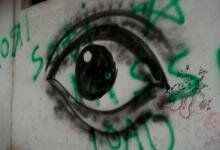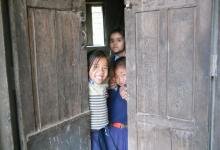Lions vs. Tigers
The use of convenient, charasmatic mega fauna in school textbooks leaves students and makes a society, environmentally disassociated.
Lions, tigers, dolphins and whales. They're all great animals, don't get me wrong. But none of them can be found in Singapore - sans the zoo of course. Dolphins and whales do cruise by Singapore waters once in awhile, but they aren't of the bottle-nosed or blue kinds that are usually represented pictorially in books as the quintessential dolphin or whale. In fact, because the bottle-nosed dolphin is so often used as a representation of what a dolphin is, when students learn that our local dolphins are a pale grey with occasional pink blotches and have a hump on their back, they often think... how weird.
Although we're called the "Lion City", Singapore never had any lions. We did have tigers, up until the 1930s when the last tiger was shot. In fact there were so many tigers in Singapore that the government put a bounty on them because it was too risky for gambier farmers and rubber tappers to work the fields. Tell kids there were once tigers in Singapore and they exclaim, "Really? How?" They can hardly imagine a tiger taking a walk in the midst of Singapore's urban sprawl.
I once took some students out to a tropical forest in Singapore's Bukit Timah Nature Reserve, and encouraged the students to keep their eyes peeled for a potential snake hanging in the trees. "What!? Singapore got snake? I thought they would have killed all the snakes by now!"
I can see why snakes might be thought of as unwanted, since they bite people and inject a deadly venom, and are associated with all terrible things of the dark and evil, but the response of this child called to mind a page in the Primary 3 textbook I flipped through a few years ago.
The textbook was titled "General Science". It's the working book for students nine years of age. In the first pages of the chapter about animals, the book had established two distinct classifications for animals: Useful, and harmful.
Useful
Bees: Bees make honey, which we can eat
Chickens: They lay eggs and we can eat them
Cows: They produce milk, and leather, and beef
Crocodiles: Their leather is highly priced
Buffalo: They work the fields
Harmful
Snakes: They bite and are dangerous
Rats: They carry diseases and are a pest
Termites: They destroy furniture
Scorpions: They have a deadly sting
Centipedes: They have a deadly bite
The pages that followed went on to describe animals of the African Savannah such as lions and elephants and gazelles and zebras. It's a very apparent food chain, and the animals are distinct and easily identified, but what these few pages illustrated to a young person, was that animals are commodities, worthy only of the value they can incur, and that they have no intrinsic values. It also taught them nothing of local animals - animals which they might encounter on the way home from school, or while taking a walk in a local forest or beach.
Hence, the only wildlife that exists, exist outside of our country, in a faraway continent called Africa. If they are inspired at all by wildlife, it is these creatures that inspire them, not the highly adept mouse deer that scrambles in the undergrowth at night in a Singapore forest, or the Colugo that clings onto trees of the forest and glides to another when it senses danger. They are told nothing of Singapore's coral reefs (yes, there are coral reefs) and of the hundreds of marine fishes that make Singapore waters home. I asked a hall full of students to name me a reef, and they all shouted proudly, "The Great Barrier Reef!" Then I asked them if they knew where the reefs were in Singapore, and most of them kept mum, except one who whispered loudly to his peer, "Singapore got reef meh?"
Environmental disassociation may be inevitable in an urban country like Singapore. Or is it? How many of us live close to a beach, or near a nature reserve? Practically all of us. We are so densely packed that it's really difficult to not walk past a patch of forest on the way to anywhere. Even our train lines run over and cut through forests, so passengers are able to see these places right from a train carriage. Being a small country, Singapore is one of the few places where you can hop a train and a bus and be in a virgin patch of forest within 20 minutes without so much a hike as a stoll on an asphalt road. Yet, I managed to meet a 14 year old boy who told me when I took his class out to a beach (Singapore is an island nation, popular for seafood, with many restaurants and cafes located along beaches) that it was the first time he had set foot onto a sandy beach. He was thrilled and excited, and somewhat perplexed and bewildered by the shorelife that we were unearthing from right beneath our noses, or between our toes. At moments like these, I truly feel glad I do what I do - taking students out to nature places on the off day to learn about local fauna. It feels more like a duty than an extra cirricular activity.
Not all students get this privilege to get out into what's left of Singapore's wild places. Even fewer have the special opportunity to venture out to sea on a boat to walk the tidal pools of our southern and off shore reefs.
Not being acquainted with the environment and other lifeforms that share our space also means there is no care or attention that is nurtured. Why should we care? There's nothing out there anyway. So we give donations to organisations far away that are battling the plight of dolphins in Japan or whales in the southern oceans, of tigers in India, and Pandas in China. Those are worthy causes as well, but there's plenty of work that needs to be done here in Singapore, work which they can not only donate to, but be involved in.
In the past ten years, more and more individuals have become aware of a local wilderness. Thanks to the efforts of a select group of individuals and volunteers who have worked hard to infiltrate schools and educate students (and their teachers! They were once students too!) about local wildlife and how they can protect it. Credit also has to be given to an increasing number of teachers who are engaging these organisations, and involving them in the school cirriculum. But there are still many Singaporeans who remain clueless about the diversity that exists around us - the resiliant creatures that have coped with our endless development and pushed to survive alongside us.
The frogs that croak after the rain, the crickets that call as you fall asleep at night, the birds that chirp at dawn, and the Savannah Nightjar that screeches at dusk, are an audible testament to the life that exists alongside us, with or without our knowledge. Just listen.



 Debby Ng forayed into journalism following failed attempts at becoming a world-class equestrian. A wildlife crime investigator, underwater photographer, dive master and founder of a marine conservation organisation, she spends what remains of her time writing about the environment, its wildlife, and its people.
Debby Ng forayed into journalism following failed attempts at becoming a world-class equestrian. A wildlife crime investigator, underwater photographer, dive master and founder of a marine conservation organisation, she spends what remains of her time writing about the environment, its wildlife, and its people.













